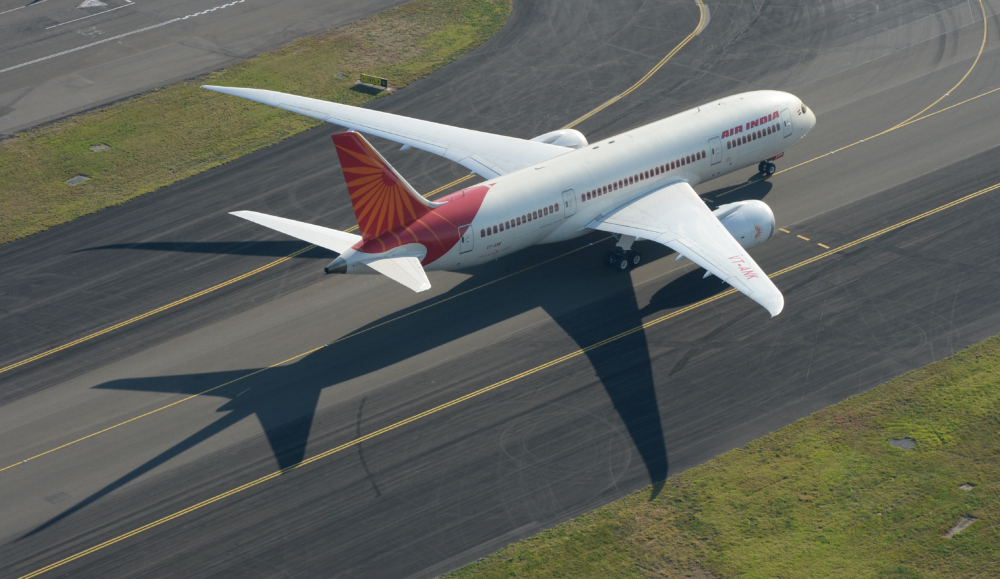The Airbus A350 and Boeing 787 are favorites among many major airlines across the globe. Carriers appreciate the two widebodies’ great balance of economics and customer experience on long-haul services. This efficiency of the two planes is supported by the utilization of composites. Let’s take a look at why the pair of manufacturers build their powerhouses with these materials.

A robust solution
Ultimately, composite materials are made from two or more different materials with different physical and chemical properties. When combined, they are stronger than the elements alone.
Composite materials aren’t a new feature in commercial aviation. Popular narrowbodies such as the A320 have used a range of parts made from composites, such as the fin and tailplane. Even famous widebodies such as the A380 utilize them, with composite materials comprising over 20% of the superjumbo’s airframe.
Nonetheless, even though composites have been a mainstay in aviation, their usage has increased significantly in recent years. This phenomenon isn’t a surprise as there are numerous benefits to be had.
Composites are not as heavy as standard materials like aluminum. Additionally, external factors don’t wear and tear them. This is a key reason why over half of both the A350 and 787 builds are made of composite materials.
The 787 is 50% composites by weight and by 80% volume. The plane is also 20% aluminum, 15% titanium, 10% steel, and 5% other materials. Boeing can benefit from this structure due to the plenty of savings to be had when it comes to weight. Even though composites make up the majority of the structure, the total weight is cut by an average of 20%.
Moreover, composite structures can adapt to make any shape. As a result, Boeing formed the 787’s fuselage with multiple barrel pieces. This approach was taken over forming many smaller aluminum panels that would need to be put together.

Optimizing the structure
The 787 makes greater use of composite materials than any previous Boeing commercial aircraft. For comparison, the 777 is only made up of 10% composites. The company notes that the rise of composite usage has had a wider impact on the manufacturing cycle. For example, the US-based carrier shares that titanium use has increased on the 787 to around 14% of the total airframe due to the approach.
“Selecting the optimum material for a specific application meant analyzing every area of the airframe to determine the best material, given the operating environment and loads that a component experiences over the life of the airframe. For example, aluminum is sensitive to tension loads but handles compression very well. On the other hand, composites are not as efficient in dealing with compression loads but are excellent at handling tension,” Boeing states.
“The expanded use of composites, especially in the highly tension-loaded environment of the fuselage, greatly reduces maintenance due to fatigue when compared with an aluminum structure. This type of analysis has resulted in an increased use of titanium as well. Where loading indicates metal is a preferred material system but environmental considerations indicate aluminum is a poor choice, titanium is an excellent low-maintenance design solution.”

Altogether, there are advantages to using titanium in the process. It can withstand comparable loads better than aluminum. It also has far fewer fatigue issues and is massively corrosion resistant. This is a factor that Airbus also recognizes. The European planemaker highlights that titanium alloys have a uniquely high strength to weight ratio. This heat-resistant metal supports the wider aircraft industry to manufacture items such as disks, blades, and other objects for fans and low-stage engine compressors.
Combining well
Overall, there is a place for several different materials in the aircraft production cycle. Both Airbus and Boeing understand the careful approach needed to balance the manufacturing process for long-term safety and cost advantages.

Airbus has considerable faith in composites. The firm is particularly a fan of carbon-fibers reinforced plastic (CFRP). With this approach, thousands of tiny carbon fibers lock into place with a plastic resin to provide significant rigidity.
Airbus expresses that with composites, a plane’s airframe can be both stronger and lighter. Meanwhile, like how Boeing points out, the frame will also need less maintenance when in service due to reduced wear down. For instance, the A350 requires 50% fewer structure maintenance tasks. Furthermore, the schedule for airframe checks for the jetliner is every 12 years. However, the timeframe for the A380 is every eight years.

Stay informed: Sign up for our daily and weekly aviation news digests.
Looking ahead
Future builds will undoubtedly continue to deploy composite materials into the next chapter of aviation. Notably, Boeing built a $1 billion 1.3 million-square-foot (121,000-square-meter) composite wing center for its future widebody, the 777X. Airbus has also been preparing to work on the deployment of new composite technologies with its next-generation ZEROe hydrogen-propulsion concepts. Therefore, composite materials will remain a significant feature in commercial aviation.
After all, the tougher fuselage allows operators to hold a more efficient fleet. Additionally, the weight savings help carriers transport more passengers while burning less fuel and flying greater distances. In such a cost-sensitive environment, airlines will reap the long-term benefits of composites.
What are your overall thoughts about composites and how they are used with the Airbus A350 XWB and Boeing 787 Dreamliner? What do you make of the deployment of the materials in the market, and do you think they will remain an important feature in the future of commercial aviation? Let us know what you think in the comment section.
from Simple Flying https://ift.tt/3DFIycb
via IFTTT
Comments
Post a Comment